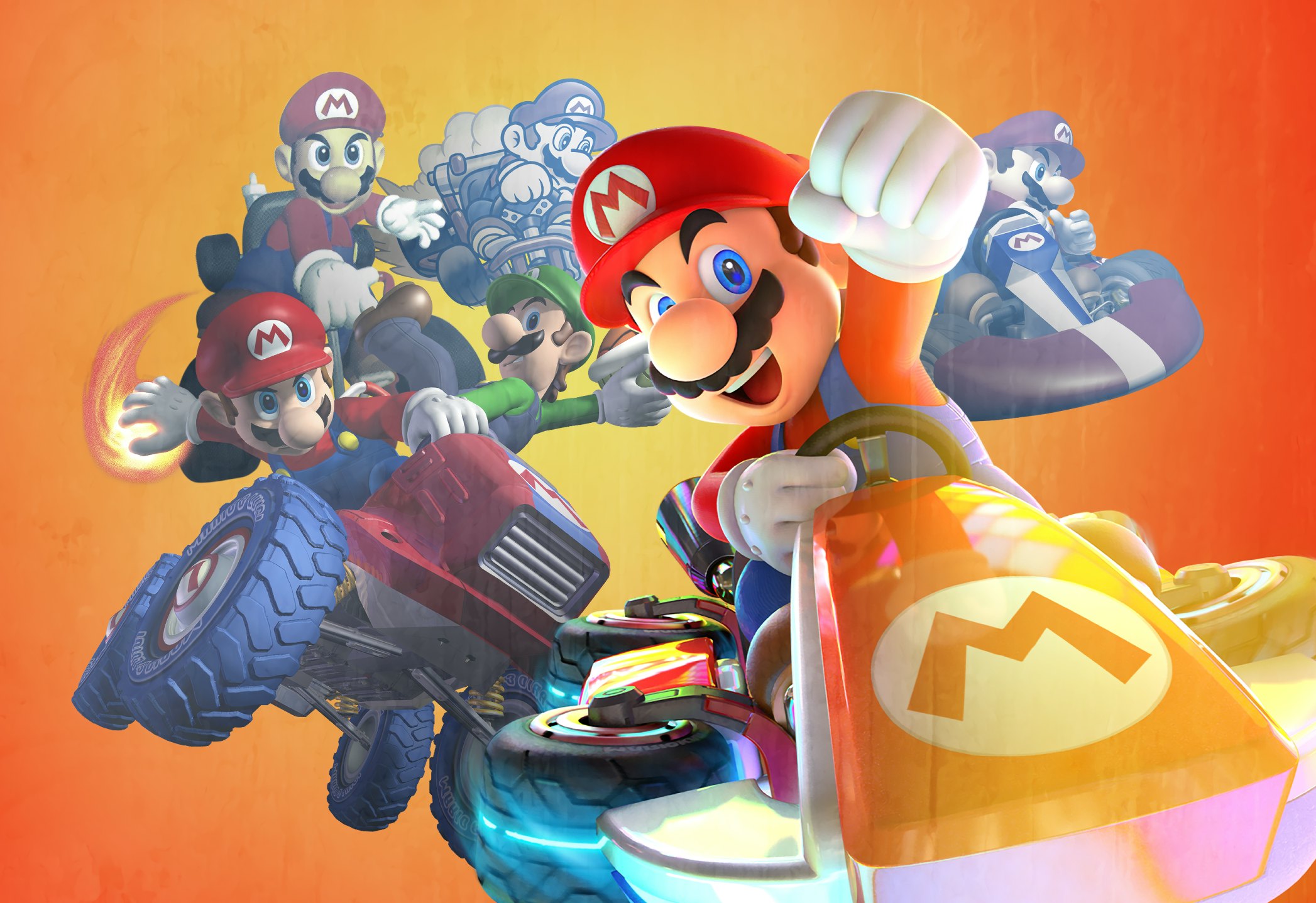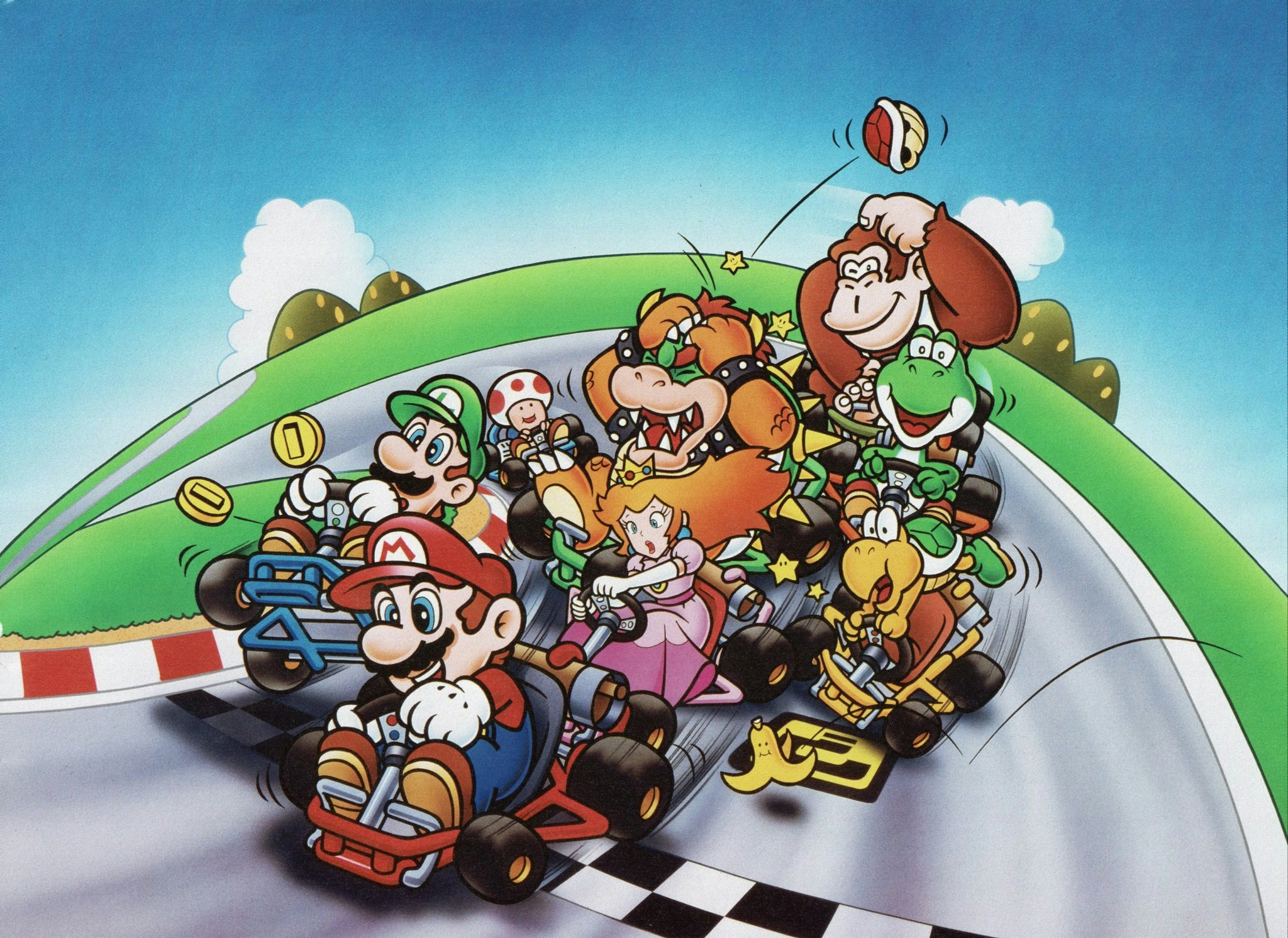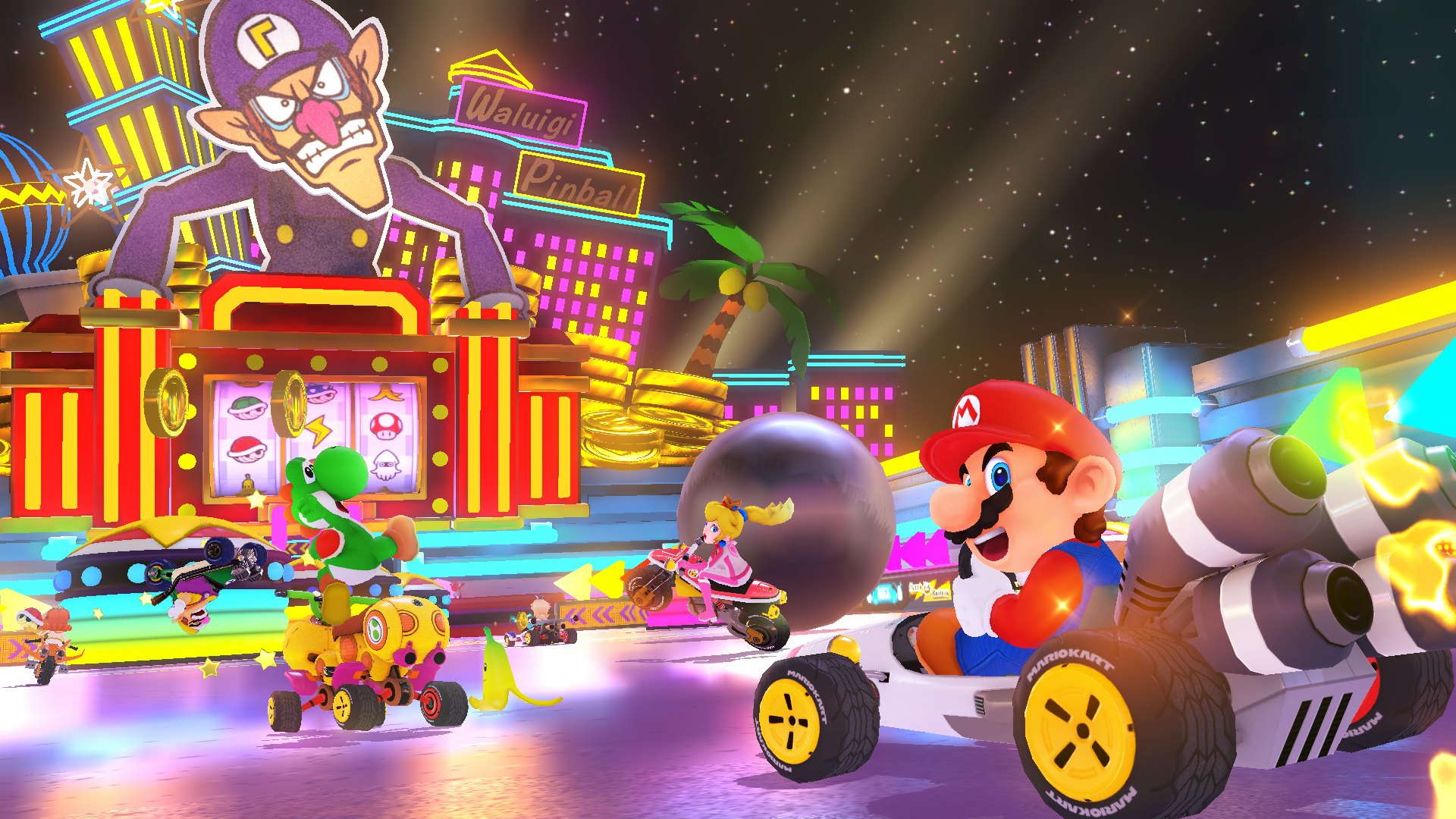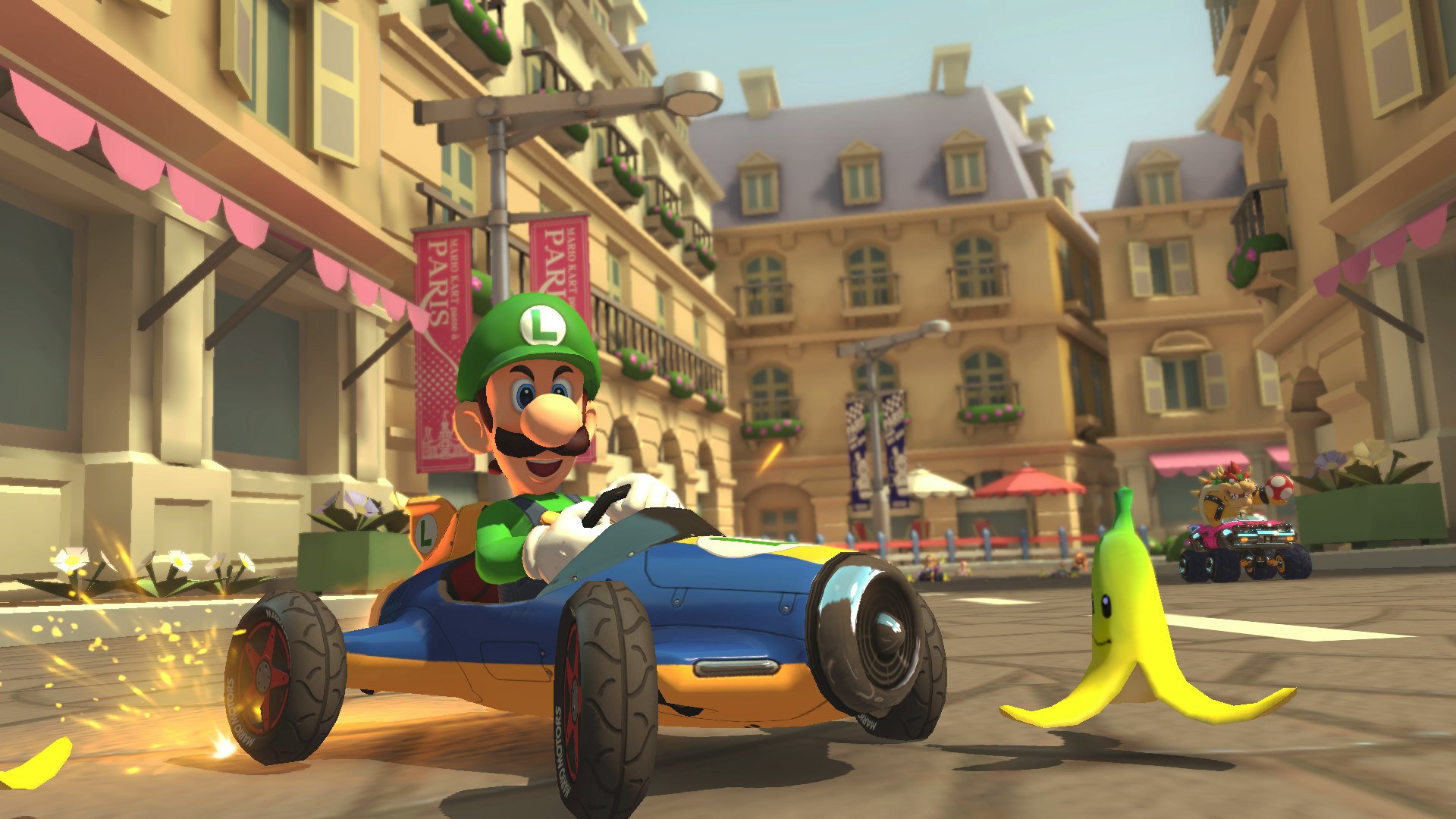
Racing is one of the purest simulated thrills in gaming. Sure, you could get behind the wheel of an actual car and careen down a race track yourself, but racing games let you share the same excitement from the comfort of your couch, where a fiery crash is far less likely. There you can feel the adrenaline of passing the leading car, the elation of drifting nimbly through a sharp turn — and the agony of a blue shell detonating in your face, letting anthropomorphic toadstools and gorillas take victory from your hands.
Racing games precede video games themselves, in the form of mechanical arcade racers. They appeared on the very first game console, the Magnavox Odyssey, as well as the Atari 2600. With racing games, speed is paramount, making them an excellent showcase for new consoles. But on August 27, 1992, Super Mario Kart debuted, turning the SNES’ speed limitations to its advantage. Rather than blisteringly fast race cars, competitors took to the track in go-karts. And to make up for its relatively leisurely pace, it gave drivers weapons to interfere with each other, popularizing a new subgenre: the kart racer.

Competitors like Crash Team Racing and Diddy Kong Racing have replicated the formula (and some of them are great!), but no game has come close to challenging Mario Kart’s throne. Some of that comes simply from Mario’s ubiquity all but guaranteeing Nintendo another success. While cute, recognizable characters and colorful race tracks may give Mario Kart an edge, there’s no denying the series has earned its place at the top of the podium.
You can’t win standing still
Racing may seem somewhat like a solved genre. Sim racers are constantly pushing the envelope on technical fidelity and realistic physics, but the core mechanics are always going to feel more or less the same. Not so with Mario Kart.
Every entry in the series feels like a genuine step up from the last, not just a refinement. The speed of the game increases with leaps in hardware, but more importantly, their developers find new ways to shake up the already successful series. Some of that comes from new powerups, but there are more fundamental updates at play. One of the earliest was Mario Kart 64 adding a speed boost to the end up of successful drift, itself iterated on by Double Dash, which required players to waggle the control stick back and forth during a drift, shredding thumbs and palms in the process.

More recently, Mario Kart 7 added gliders to let players briefly fly after hitting a ramp, and Mario Kart 8 introduced anti-gravity, turning walls and ceilings into part of the race track. These are risks that could throw other racing games into a downward spiral if they didn’t work right, but Mario Kart seems to nail every experiment it tries. It helps that the series has had 30 years to innovate, and that it’s backed by all the might of Nintendo, but that doesn’t make its willingness to go out on a limb less impressive.
Accepting all challengers
No amount of innovation matters if people just aren’t playing your game. Racing isn’t the most inviting genre to begin with, and those who are heavily invested in the scene are likely to ignore the child-like appeal of Mario Kart. Nintendo knows that, and so it’s invested heavily in making the series approachable for newcomers and those who don’t typically enjoy racers. The cute factor goes a long way here, but there’s way more to it than that.
Weapons and other powerups separates Mario Kart from hardcore racers — if the go-karts and dinosaurs didn’t do that already. Even if you’re not the world’s best kart driver, you can still line up a perfectly timed blue shell or lightning bolt and take home the gold. That all-powerful blue shell has become something of an icon for the series, a symbol for gleefully ruining your friends’ day (and maybe your friendship itself) in the name of cheap victory.
That’s not to say that skill has no place in Mario Kart. Even deploying powerups appropriately takes its own strategy, and there are other tricks that help pros and scrubs alike get ahead of the competition.

Tracks in Mario Kart are far from conventional, even from the start of the series. Their layouts don’t look like courses in any other racing game, full of speed boosts, ramps, roaming enemies, and other funhouse diversions to make racing about so much more than speed. They’re also full of shortcuts and chokepoints, so even if you can’t win a straight race, you just might be able to claim victory on the back of one smart detour.
Nintendo is no stranger to turning highly competitive genres into more welcoming affairs. Super Smash Bros., released 7 years after Super Mario Kart, spawned both an incredibly successful series and a thriving competitive scene. Mario Kart has become the former, but no corresponding pro scene has emerged. Pro Mario Kart is a thing, existing in self-organized community tournaments, but it’s nowhere near the level of Smash Bros.
That may be due partially to the pro fighting game scene being a juggernaut in the way that racing isn’t, but it also seems to be a conscious decision by Nintendo. Even Masahiro Sakurai, creator of Super Smash Bros., has said Nintendo intentionally focuses on casual players over pros, and that’s evident in Super Mario Kart and all the games that followed. Nowhere in the series is there evidence of Nintendo making decisions based on high-level players, something that’s driven casual players out of once-welcoming games in the past.
It should come as no surprise, then, that Mario Kart is one of Nintendo’s most successful franchises, outselling The Legend of Zelda, Animal Crossing, and even Smash Bros. It’s a perfect party game — fun and challenging, but not so serious that losses really hurt. It’s a series embraced by folks who don’t keep up with gaming that still has fans among the hardest of hardcore. Mario Kart turns 30 this week, and there’s good reason to think it’ll still be taking laps for as long as Nintendo is around.







